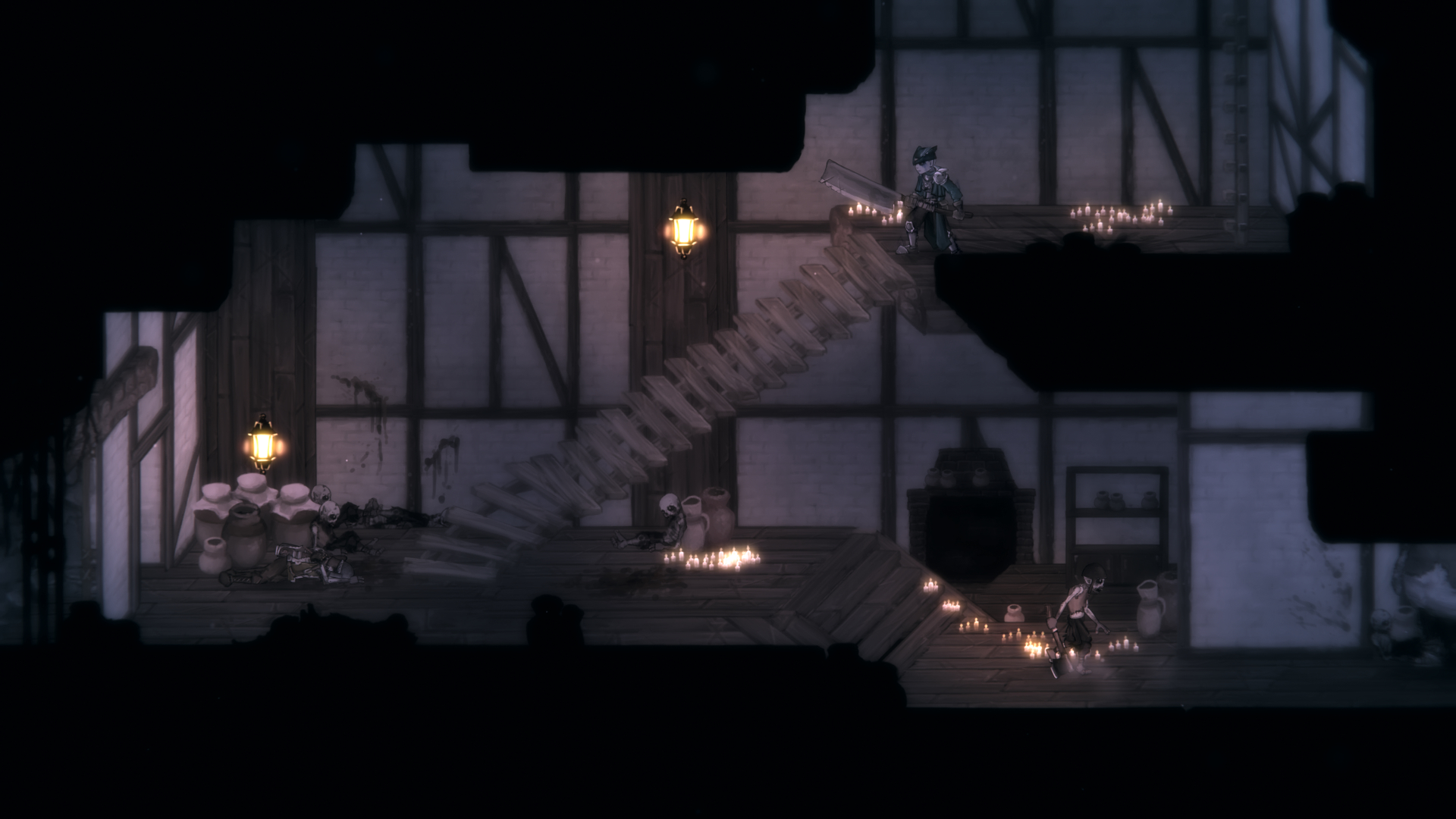Salt and Sacrifice is part Dark Souls, part Monster Hunter
Track down bosses and kill them for a "loot pinata" in this sequel to an indie classic

As a condemned criminal, the protagonist of Ska Studios’ followup to 2016’s Salt And Sanctuary faces an unpleasant choice: death, or a life of servitude spent hunting colossal monsters called Mages to rid the world of their malicious presence. When you see these hideous beasts – and despite his self-effacing comments about his artistic ability, this is no slight on creator James Silva’s creature designs – you wonder if our antihero might wish they’d taken the first option.
Sacrifice’s predecessor was Silva’s biggest hit to date, a 2D Soulslike with elements of Castlevania and a combat system built around his earlier Dishwasher games. This sequel adds a helping of Monster Hunter to the mix: facing off against these brutes in fixed-location battles is merely the denouement to an extended pursuit.
Into the thick of it

You find the Mages while you’re simply exploring this side-scrolling world: they have preset paths and destinations, but if they encounter you they’ll spawn minions to protect themselves as you chase them down. And, as in Monster Hunter, occasionally they bump into one another and that’s when things get really messy. "I really wanted this sense of playing this little guy who’s exploring this world where chaos is raging," Silva smiles.
But there’s a stronger sense of structure and purpose to a proper hunt. "You’ll encounter these triggers where you’re not just dealing with these roaming Mages, you are going to actually hunt this one – let’s say a Hydromancer," Silva says. "When you embark on that hunt, these monsters that are affected by the warp of magic will start to spawn and those are your clues."
Kill these, and they add to a cumulative clue tally; once that has passed a certain threshold, a path will be marked to your target’s location. "Eventually it does end in like an arena battle that plays out like a [regular] boss fight. And you destroy them and they become a whole loot piñata, which is a great visual."

This part is familiar territory for Silva. The prelude? Not so much, and it’s this that he’s still balancing, with help from industry friends who’ve been offering feedback. The plan is that you can damage a Mage to a certain extent on a hunt, but they’ll still have a significant amount of health by the time you corner them.
But if you’ve taken damage on the way, you face a choice. Do you retreat to stock up on restoratives and allow them to heal somewhat, or risk pressing home the advantage, even if you’re not in the best shape either? And hunts can play out differently each time: "I can maybe script in a Venomancer just keeps appearing to screw with you, because you’re in their territory," Silva chuckles mischievously.
Sign up to the GamesRadar+ Newsletter
Weekly digests, tales from the communities you love, and more
If any of these pursuits feel too arduous, you can take along a fellow hunter. Fittingly, Silva has brought onboard a collaborator, Shane Lynch, to develop the multiplayer mode so the entire campaign can be played in co-op, locally or online, and progress is shared. Acknowledging that Sanctuary’s local-only, single-screen solution was an awkward fudge, he says it was the most requested feature by the first game’s players. "It’s been really complicated," he says. "But Shane’s a genius at netcode."

Whether you’re alone or not, during the chase, Silva says, your quarry will hold back some of their power; when they reach their final destination, they’ll cut loose with their most vicious attacks. Survive a Mage’s last stand, and you get the chance to stab them in the heart, a successful finisher greeting you with the legend ‘MAGE DEVOURED’.
It’s a violent but satisfying ending to these lengthy battles. "The idea is that they’re so infused with chaotic magic, if you just slay one, it’s not enough – you have to destroy the heart. And it gives the whole thing a finality that removes this otherwise immortal creature from reality," Silva says. "When you bring them down, I just wanted that punchy feeling where you’re like, ‘Finally! I put up with you for so long!’"
This feature first appeared in Edge magazine. For more like it, subscribe to Edge and get the magazine delivered straight to your door or to a digital device.
Edge magazine was launched in 1993 with a mission to dig deep into the inner workings of the international videogame industry, quickly building a reputation for next-level analysis, features, interviews and reviews that holds fast nearly 30 years on.



